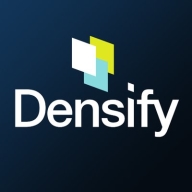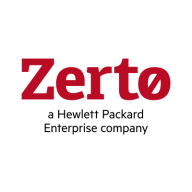


Zerto and Densify are competitive IT solutions, with Zerto leading in disaster recovery and continuous data protection, while Densify shines in resource optimization and cloud cost management.
Features: Zerto offers robust disaster recovery, seamless data replication, and workload mobility, making it suitable for organizations emphasizing uptime and data integrity. Densify provides AI-driven insights for cloud optimization, helping businesses improve resource usage and cost efficiency.
Room for Improvement: Zerto could enhance its analytics capabilities for proactive insights and expand its cloud integration options. Meanwhile, Densify might improve its setup complexity, enhance usability for non-technical users, and prioritize quicker deployment processes.
Ease of Deployment and Customer Service: Zerto boasts an intuitive deployment and strong technical support, ideal for swift implementation requirements. Densify, while comprehensive, requires intricate setup but compensates with substantial customer support, assisting with detailed configuration needs.
Pricing and ROI: Zerto's flexible pricing fits varied budgets, providing ROI through reduced downtime. Densify, with a higher initial cost, offers excellent long-term ROI via substantial cloud savings and enhanced resource optimization, proving beneficial for cost-focused businesses.



IBM Turbonomic offers automation, planning, and right-sizing recommendations to streamline resource management, improve efficiencies, and optimize costs across virtualized environments and cloud platforms.
IBM Turbonomic is valued for its capability to optimize resource allocation and monitor virtual environments efficiently. It facilitates automated decision-making in VM sizing, load balancing, and cost optimization for both on-premises and cloud deployments. Users can leverage insights for workload placement, ensure peak performance assurance, and effectively right-size across VMware and Azure. The ongoing transition to HTML5 aims to improve visual and navigational ease, while expanded reporting features are anticipated. Opportunities for improved training, documentation, and integrations enhance platform usability and functionality.
What Are the Key Features?In finance, IBM Turbonomic aids in maintaining platform efficiency during market fluctuations. Healthcare organizations leverage its capability for resource optimization during high-demand periods to enhance patient care support. Retailers use it for planning in peak seasons, ensuring resources align with fluctuating demand to maintain performance continuity.
Densify is a hybrid cloud and container resource management platform that makes workloads self-aware of their precise resource requirements and automates the resource management and selection process. This solution helps you control your cloud spend and also helps your apps perform and scale better. Densify enables you to match your cloud requirements with the optimal cloud supply. Additionally, Densify is the only technology that leverages patented, predictive machine learning-powered analytics to perform advanced modeling of workload patterns, and provide precise optimization directives. It is ideal for cloud engineers, container platform owners, and IT finance.
Densify works by:
Densify Features
Densify has many valuable key features. Some of the most useful ones include:
Densify Benefits
There are many benefits to implementing Densify. Some of the biggest advantages the solution offers include:
Zerto is used for disaster recovery, business continuity, data migration, and ransomware recovery, providing continuous data protection and near real-time replication. Valued for ease of use, efficient failover processes, and versatile integration, it enhances organizational efficiency, reduces errors, and boosts productivity.
We monitor all Cloud Migration reviews to prevent fraudulent reviews and keep review quality high. We do not post reviews by company employees or direct competitors. We validate each review for authenticity via cross-reference with LinkedIn, and personal follow-up with the reviewer when necessary.